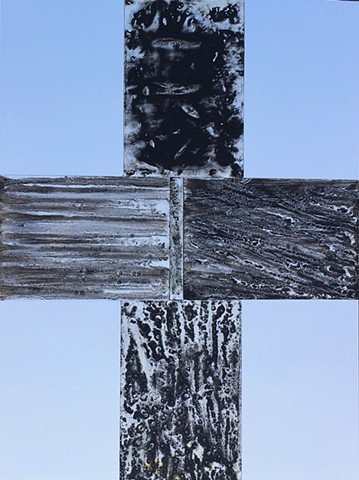MIXED MEDIA
This piece is a response to the protests in North Dakota against the Dakota Access Pipeline Project. The pipeline, if completed, would carry over 500,000 barrels of crude per day from Northern North Dakota to Illinois. The pipeline is slated to go through the sacred land of the Standing Rock Sioux Tribe and they are in opposition to it. It threatens to contaminate the water supply from the Missouri River which provides water for thousands of residents of the reservation as well as millions of people living downstream. Conservation groups oppose the pipeline as well citing safety concerns and the impacts of water, air and soil quality.
Cannupa Hanska Luger is a Sioux tribe member and artist. He had called on people to make ‘mirror shields’ to protect the protesters (or water protectors as they are called), from the DAPL security forces who fired cold water cannons, pepper spray and unleashed attack dogs on the protesters when they were still present at the site. The protesters were unarmed. The mirror shield forces the aggressor (in this case the DAPL security) to look at themselves as they attack men, women, and children who are defending the land.
This piece uses mirrors as a reference to seeing ourselves and our role in what transpires on this earth. The patterns were created with a mixture of black paint, oil, and water. They are reminiscent of snakeskin. The black snake is symbolic in the Lakota legends as a bringer of end times as it winds its way through the land and destroys. Some tribal members see the pipeline as the black snake. The water represents the sacred water rights as well as the trapped tears of the Sioux Nation. The cross has various meanings from tribe to tribe but is found in most Native American folklore stories and in this case I use it to symbolize the crossing of the pipeline under the sacred river and the double-crossing of the water and land rights of the tribal lands. The proposed route crosses the Missouri river at the confluence with the Cannon Ball River, an area that is of utmost cultural, spiritual, and environmental significance. The black paint is also a reference to the Cannonball River, cannon balls and explosives.
